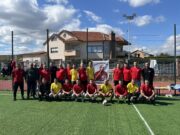On 24 October 1975, Icelandic women did not go to their paid jobs nor did they do any housework or child-rearing at home.
In 2018, Iceland made unequal pay for equal work illegal; companies and government agencies with over 25 employees face heavy fines. In 1968, the Arctic Ocean herring fishery collapsed as a direct result of overfishing. The once-plentiful Atlantic herring was on the verge of extinction, and Iceland’s economy took a sharp tumble. Fish processing plants were abandoned, boats sat idle in harbors and docks no longer hosted lively gatherings. But even as many herring girls returned to domestic duties, their impact on Icelandic politics and society continued to resonate.
- The goal was to have as many Icelandic women as possible participate; approximately 99,000 women participated, which was 90% of half of the population .
- As well, some women could have been fired for going on strike but could not be denied a day off.
- After the law was brought in, more than 90% of fathers used their paternal leave.
- Women were also more successful in running for political office, with the proportion of women in parliament rising to a record 43%.
- Collections consist of Participedia entries that share common traits, such as association with a large-scale initiative, institution, or specific topic.
Both farming and trading were family businesses, and women were often left in charge when their husbands were away or dead. There is also evidence that women could make a living in commerce in the Viking Age. Merchants’ scales and weights found in female graves in Scandinavia suggest an association between women and trade.
The Equal Status and Equal Rights irrespective of Gender Act mandates equal pay and equal terms of employment for the same jobs or jobs of equal value. The equal pay law requires companies to prove the payment of employees at equal rates for equal work or pay a $385 fine per day. Together these agencies research, advertise, beautiful icelandic women advocate, and check laws on gender equality. Their goal is to create a legal, cultural, historical, social and psychosocial approach to gender equality. That means from early education through university, which is free, all sports, classes, and forms of schooling must include and practice gender equality.
Women’s suffrage
The age of settlement is considered to have ended in the year 930 with the establishment of Alþingi. Women in IcelandA procession in Bankastræti in Reykjavík on July 7th 1915 to celebrate women’s suffrage. The museum director adds, “They had to be ready to start working whenever the ships arrived.
Gendered Narratives in Historical Accounts
Vigdís says she would not have become president without the strike which she said was the “first step for women’s emancipation in Iceland”, which “completely paralysed the country and opened the eyes of many men”. In the year following the strike, Iceland set up the Gender Equality Council, and passed the Gender Equality Act, which prohibited gender discrimination in the workplace and in schools. Though the museum offers a comprehensive history of the herring years, it’s the herring girls themselves who are the stars of the show. The museum hosts salting exhibitions on its front dock, where performers—including some former herring girls—demonstrate how freshly caught herring were gutted, salted and placed in barrels. Accordion music, singing, dancing and some lighthearted theatricality accompany the shows, capturing the lively spirit of the herring boom years. After kids grow up with equal time from parents, gender equality lessons don’t stop. Article 23 of the Act on Equal Status and Equal Rights of Women and Men mandates that gender equality must be taught in schools throughout all levels of education.
Ninety percent of Icelandic women participated, whether they had paid work or did the un-paid work of caring for children and home. Though there are plenty of examples of women’s history being uncovered in the U.S., there is a lot we can learn from our international colleagues . This is why groups like the International Coalition of Sites of Conscience are so important. If you are interested in more women’s history collaboration on an international scale, start with the International Federation for Public History and the International Federation for Research in Women’s History. And when it comes to collecting, researching, and sharing queer women’s history in Iceland, the work has just begun.
The event was unprecedented because of the huge backing it had among women at the time, credited in part to the fact that the organizers chose to call it “a day off” instead of a strike. It is believed that as many as 90% of all Icelandic women participated in the strike, by either not showing up to work or not performing any housework. In the capital of Reykjavik, an estimated 25,000 women gathered to protest. Since then, Icelandic women have gone on strike an additional five times, most recently in 2018. The year 1975 had been dubbed the International Women’s Year by the United Nations. During the World Conference the same year, the World Plan of Action for the Implementation of the Objectives of the International Women’s Yearwas adopted. At that time in Iceland, about 50% of women in the working age group worked outside the home and were also believed to do most of the housework.
They are currently ranked as the 17th best women’s national team in the world by FIFA as of December 2019. At the 2013 UEFA Women’s Championship, they took their first point in a major championship, following a draw https://www.wikihow.com/Show-a-Girl-You-Like-Her-on-Snapchat against Norway in the opening game. Iceland has national women’s teams for basketball, handball, volleyball, and the women’s national football team which represents Iceland in international women’s football.
Iceland election: polling day arrives with Pirate party looking for gains
The strike lasted until midnight that night, when the typesetters returned to work on papers for the next day. These papers contained nothing besides articles on the women’s strike.
In 2021, the quota for each parent is 5 months of paid leave, and there are 2 months of shareable paid leave; in addition there is also unpaid leave (13 weeks per parent, non-transferable). Parental leave may start up to one month before the expected date of delivery. Women achieved their intended goal, basically shutting down Iceland for the day.






















